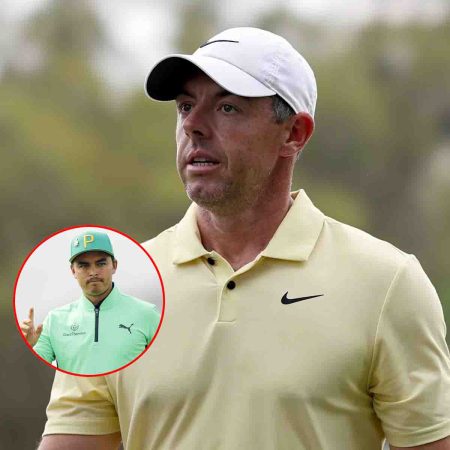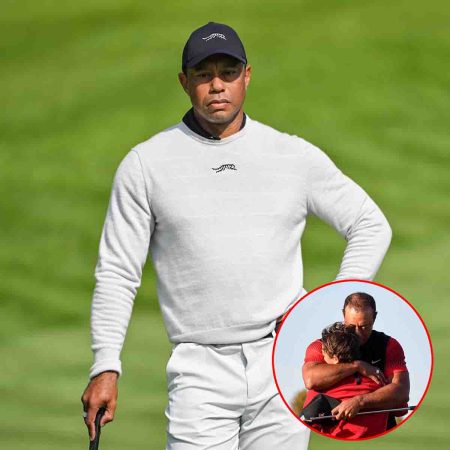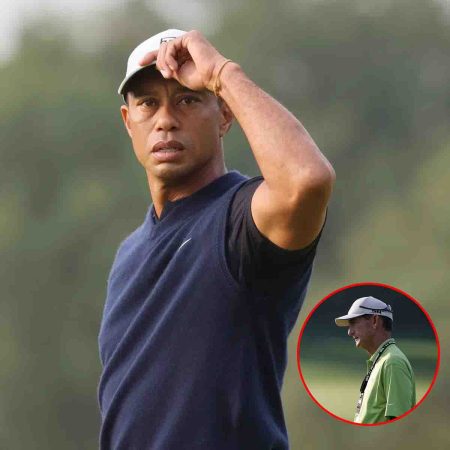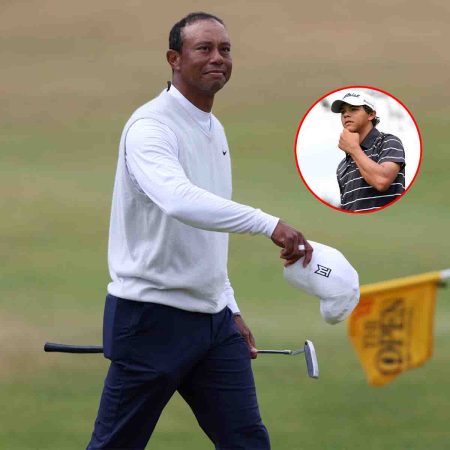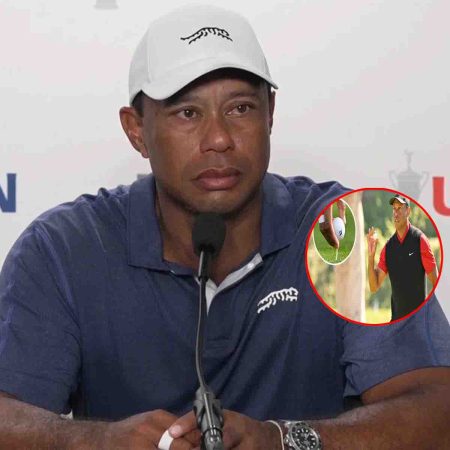Strikers dwell on misses, but the time you worry and the time that sleep deserts you is the time chances don’t come. Big moments can linger and you replay them in your mind — nothing stays with you like a penalty gone awry — but they’re rarely symptoms of sickness in your game. That’s why I have few concerns about Darwin Nunez and his form for Liverpool because his ability is obvious and the rest he can learn. If he wants to improve, he will.
Nobody has fluffed more big chances than Nunez in the Premier League this season (15 according to Opta). Place that next to an initial transfer fee of £64million ($77.6m), compare his 10 goals in all competitions to Erling Haaland’s 27 for Manchester City, factor in the Norwegian’s cheaper cost and Liverpool’s struggles in the Premier League, plus those cruel chants from opposition fans about him being “just a s*** Andy Carroll”, and it doesn’t look great, does it?
Most of that is grossly unfair, though. Nunez is a modern forward in the same kind of mould as Mohamed Salah or Sadio Mane rather than a traditional centre-forward, and he is certainly not a goalscoring freak like Haaland (which is meant as the sincerest compliment). But then, who is?
It wasn’t too long ago that a goal every other game would be viewed as a fine return for most players and perhaps Haaland, Lionel Messi and Cristiano Ronaldo have changed the way we view that. But they are outliers, not the norm. Not everybody can do it.
Harry Kane has scored 17 goals for Tottenham Hotspur this season and has barely had a mention because of Haaland’s blitz through Premier League defences, while Nunez’s total of 10 in 23 appearances for Liverpool is viewed through the prism of discomfort. Jurgen Klopp’s side have been poor defensively, but their big issue is continuing to play a high line without the energy to press in midfield and I don’t see Nunez as a major factor in that.
And 10 goals isn’t such a bad marker. In the Premier League era, only Robbie Fowler, Fernando Torres, Daniel Sturridge, Salah and Diogo Jota have got there sooner for Liverpool.
A deeper dig into those 15 ‘big’ misses paints a more nuanced picture — eight of them were on target and two hit the woodwork. Speak to senior people at Liverpool and they’ll tell you how much they love his movement, his pace and power and how Nunez always comes back for more. There was that early, idiotic moment when he was sent off against Crystal Palace and perhaps that dented his confidence, but supporters have stuck by him and that tells its own story.
I asked Mark Carey, The Athletic’s data analyst, to crunch through the numbers and then watch some clips with me, to find out whether they backed up my theories. Because I like a lot of what I’ve seen with Nunez, who is still only 23, a player with unbelievable talent who may not be a natural finisher. It’s obvious — glaringly so — that the Uruguay international needs to find a bit more self-control in front of goal, but I don’t see a massive issue there.
What do I mean by a natural finisher? It’s when you’re comfortable in the positions you’re in, when there’s no faffing. You’re not flustered or over-excited or wide-eyed or looking like you’re thinking, “What the hell am I doing here?” Nunez has everything else. He’s got lightning pace, which defenders hate, he gets into good spaces and he can finish well. When the ball comes to him at speed, he’s deadly. It’s when he has time to think about it; that’s when it doesn’t go right. He snatches at the ball and rushes it.
To return to the start, if Nunez wasn’t regularly getting good opportunities I’d be fearful for him and Liverpool, but he is. As you can see below, his involvement in Liverpool’s shots and chance creation is not only the highest for his team but higher than any player in the Premier League so far. That tells you he’s involved and crucial and willing.

Converting those chances is a matter of repetition on the training ground (we shouldn’t forget relative lack of experience in terms of league starts), feeling it happen in matches, enjoying it, getting comfortable with it and then doing it again. Work hard and, with a bit of composure, reaching 20 to 25 goals a season shouldn’t be a problem.
If you’re a scout looking at some of his goals and have never seen him miss the chances that he has, you’d think this guy is unbelievable. He has great variation in his goals — scoring with his right foot, his left foot, and some great headers, too, against West Ham United (in the Premier League) and Ajax (in the Champions League).

Let’s start by looking at his most recent goal against Wolverhampton Wanderers in the FA cup. What’s noticeable is that he actually wins the header in his own half from the throw-in. The key to this goal is where he starts and then where he finishes.

If you watch his movement as the attack progresses, he’s actually pointing to where he wants it.
If he didn’t want to score goals and he wanted to hide, he wouldn’t even make that run or point to where he wants Trent Alexander-Arnold to put it.

As he pulls away, the defender just can’t keep up with him. It’s a brilliant finish — whether it goes in off his shin or not. It’s a ridiculous ball from Trent, but that tells me that — while people might think he’s lacking belief — he’s eager to score. That might sound obvious, but it means he’s not hiding, he’s not disguising anything or trying to play safe.

It’s a similar position that he scored from in the Premier League against Southampton. If you watch his movement, he steps a yard and a half to his right to create space and keep himself onside.

As I always say, it’s one run for the defender and another one for yourself. It’s a brilliant run because the defender actually comes with him, which is exactly what he wants.

He creates all that space himself — you’re relying on the delivery but it’s similar to the Wolves goal in his finish with that left foot.

People talk about his connection on the ball with his finishes, but I wouldn’t care. It wouldn’t bother me one iota how the ball went in — whether it was pinging off my foot, off my backside, off my shin, whatever.
The most important thing is that you’re in there, and then it’s about getting a connection on it — get it in the back of the net.
The positive thing is that he doesn’t care if he misses, but there are things he can work on.
The most notable thing is that he needs to keep his head when he has more time to think about his shooting. Look at this example below, where he gets in behind Aston Villa’s defence.
With his pace, I was expecting him to go across Ezri Konsa here. He does favour his right foot, and with that next touch, he could go across because he’s already a yard ahead of Konsa. If he goes across him to open the pitch up (yellow arrow) then he’s in the middle of the goal rather than being forced onto his left foot (white arrow).

If he got across Konsa then he’d have more options. Konsa can’t bring him down or he’d be sent off. Instead, he pulls the shot wide…

… just as he did against Brentford…

… and an almost identical effort against Manchester City in the Carabao Cup.

That’s where you just have to keep your composure. Improving this simply comes down to time and sweat in training. I used to have sessions where I’m in front of the defender as he’s chasing me down, and just practised hitting it into the corner of the net.
The more you get in those situations, the happier you feel about your surroundings and weighing the situation up. That’s part of his problem when he is one on one — he never really looks comfortable. The more you practise, that’s when you get better.
Even looking at Liverpool’s winning goal against Leicester recently, in the build-up to Wout Faes’ own goal, it’s a clever finish from Nunez to dink it over the keeper and it’s really unlucky to hit the post.

They get the goal anyway but if you rewind a fraction, there was maybe a better decision available. With the pace that the goalkeeper is coming out at, Nunez did have the option to go around him to the left-hand side (shown in yellow), which I think would have been the easier thing to do.

It’s important to consider Nunez’s all-round game and not just his finishing. His pace is frightening and when he’s got grass to run into — particularly in that left channel — there are not many defenders who are going to catch him.
You can see that in the same Leicester game, where Faes probably feels like he’s got him covered.

But it’s brilliant from Nunez as he breezes past Faes with a burst of pace…

… to get to the byline and cut it back for Salah.

It’s not a problem for him to be on the left-hand side because he’s more than happy using his left foot, which will only be of huge benefit to him.
Even the best, like Salah, can scuff it wide! But Nunez finds him really well.

This was great play against Leicester, but could Nunez improve his wider decision-making? Of course.
There have been a few examples this season where he holds onto the ball for just that bit too long when he should release it — the most obvious example being against Manchester City earlier this season.
As Liverpool break, they have a three-on-one overload to seal the game and it’s clear what Nunez should do.

You’ve just got to pick your head up. That’s not a difficult pass into Salah and he has to make it (yellow arrow).

Instead, he shoots with two players around him and the attack breaks down.

Having more awareness of what options are available is important, but he’s got to pick his head up and see the pass. He clearly made up his mind that he’s shooting, but you have to be aware of the situation you’re in and what’s around you
It’s easy to forget that Nunez only experienced two seasons of first-division European football before making the move to Liverpool. Before joining Benfica in 2020, his only taste of football outside South America was in Spain’s Segunda Division for Almeria.
The point is, he has plenty of time to become the world-class striker that all his attributes suggest he could be and he has plenty of knowledgeable people at Liverpool to help him get there, including the fans who continue to back him.
For now, it’s about the training ground, knuckling down, practising relentlessly, finding comfort in that toil and honing those skills. He’ll get there.
SOURCE: theathletic.com



